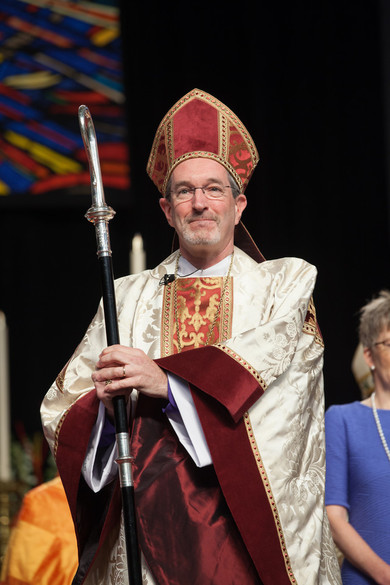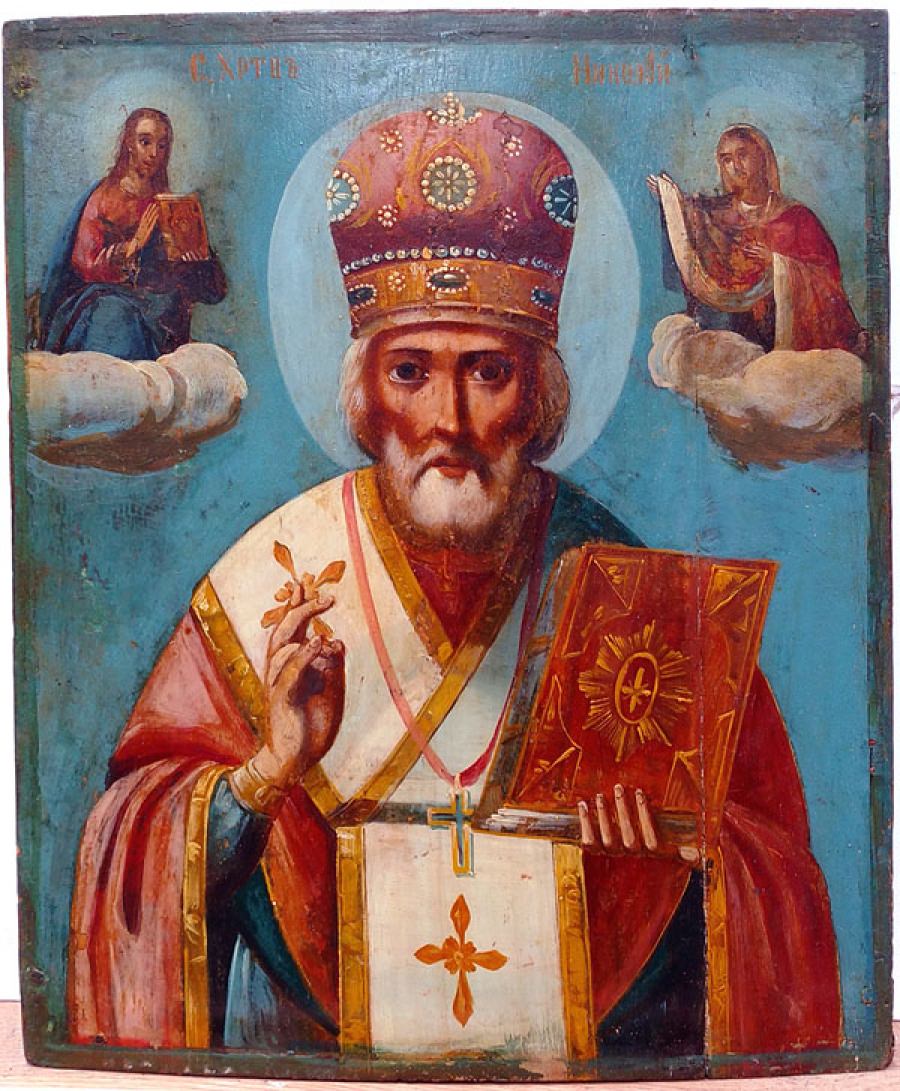This week, we welcome the Right Reverend Alan Gates, our Diocesan Bishop, for a visit to St. John’s, which will be his final formal visit here before his retirement next fall. This morning, our diocesan Bishop Nominating Committee published a new diocesan profile, the result of several months’ work reflecting on the life of our diocese and gathering stories and input from people all over the area. Wednesday, we celebrated the feast day of arguably the most famous Christian bishop in history, St. Nicholas of Myra—better known to his modern disciples as Santa Claus.
I mean: Come on! Same guy.
In the spirit of seasonal fun, and as a break from our exceptionally-apocalyptic Advent lectionary readings, I thought I’d share my three favorite stories about Saint Nicholas of Myra (c. 270–343), in their family-friendliest versions.
- Saint Nicholas, like many early Christian leaders, was born into an aristocratic family, but gave much of his wealth away. One poor family included three teenaged daughters whose father could not afford a dowry, limiting their prospects for marriage.* Wanting to help the family without dishonoring them, Nicholas secretly dropped three bags of coins into their home, one for each girl’s dowry. One version of the story says that he dropped the bags of coins through the window; another says that Saint Nick dropped the gold even more circuitously through the chimney, whence it fell into the stockings they had left drying by the fire. (Sound familiar?)
- In another story, Nicholas visits a region undergoing a great famine. He happens to pass by a butcher’s shop when he senses something strange going on. Nicholas makes the sign of the cross over a large barrel, upon which three small children emerge. The children had been killed and pickled by the butcher, who had planned to sell them to the hungry townspeople as ham. Luckily, Nicholas’s prayer was sufficient to achieve their resurrection. This is an extraordinary tale, but one that was widely believed and often depicted in medieval art—with the result that Saint Nicholas became commonly associated with children, of whom he is a patron saint!
- Saint Nicholas’s Day (December 6) became the day on which some communities elected a “boy bishop” for the year, a child chosen to exercise episcopal authority until Holy Innocents’ Day (December 28). In a tradition of tremendous theological depth** and great silliness, the boy bishop donned the (adult) bishop’s mitre and crozier, and he and a coterie of boy priests ran the cathedral for the month, leading all worship except the Mass.
One wonders whether our Bishop’s appearance just after Saint Nicholas’s Day ought to evoke any of these associations. I don’t believe we’re missing any possibly-pickled parishioners,*** and I haven’t spotted any bags of gold—But should our acolytes attempt a coup in the chancel this Sunday, then… Well. They may well be within their rights.

* One can fill in the details about the likely future employment of three poor young women who could not be married.
** “he hath put down the mighty from their seat / and hath exalted the humble and meek”
*** although at home, we’ve just finished reading The Big Friendly Giant…


